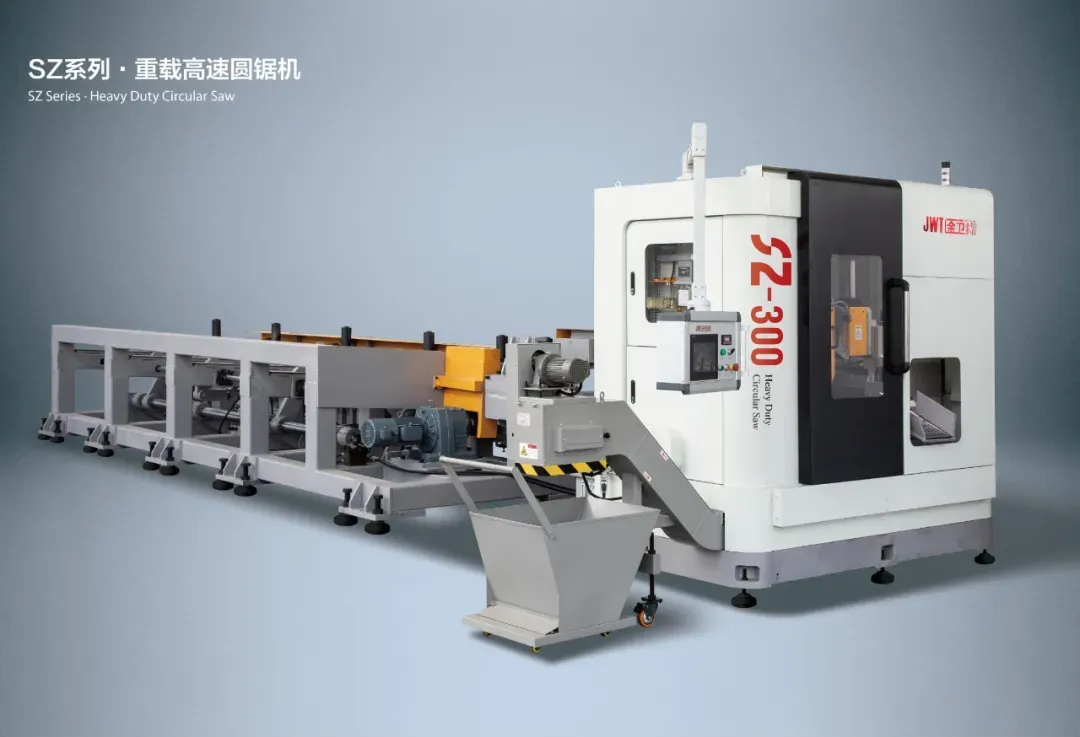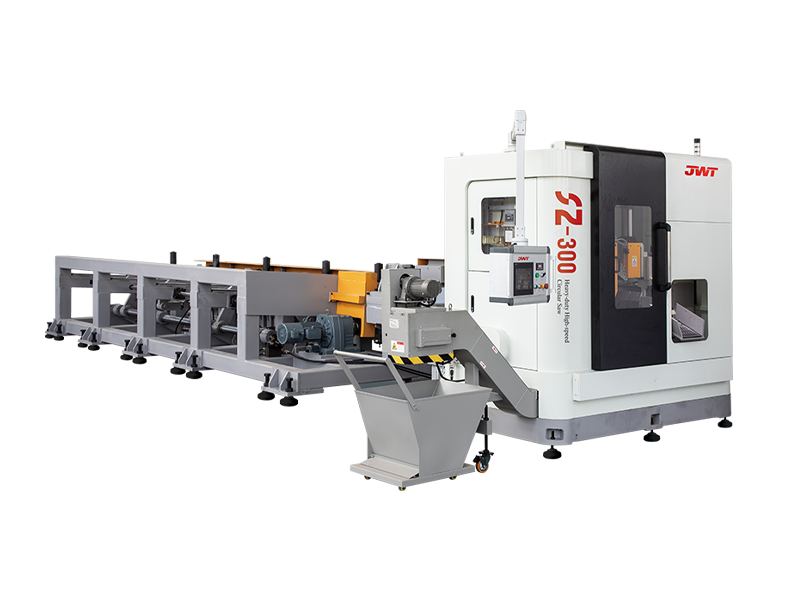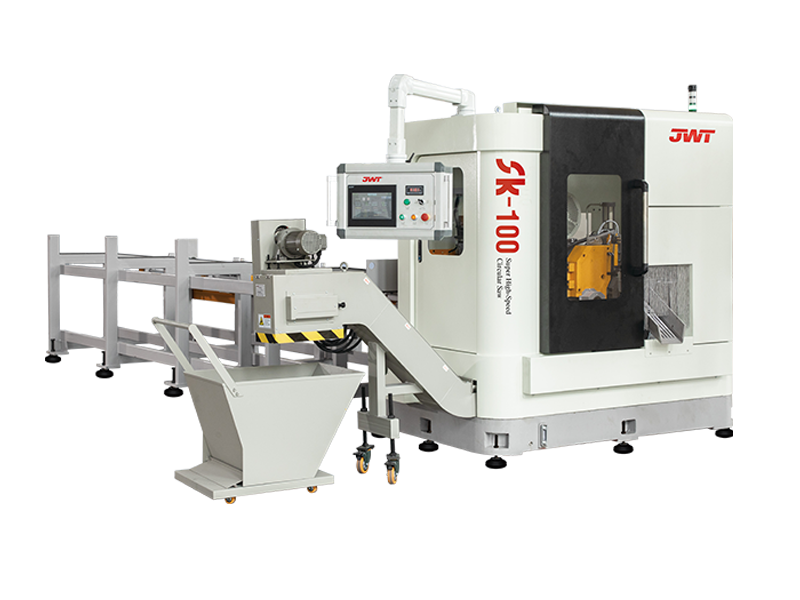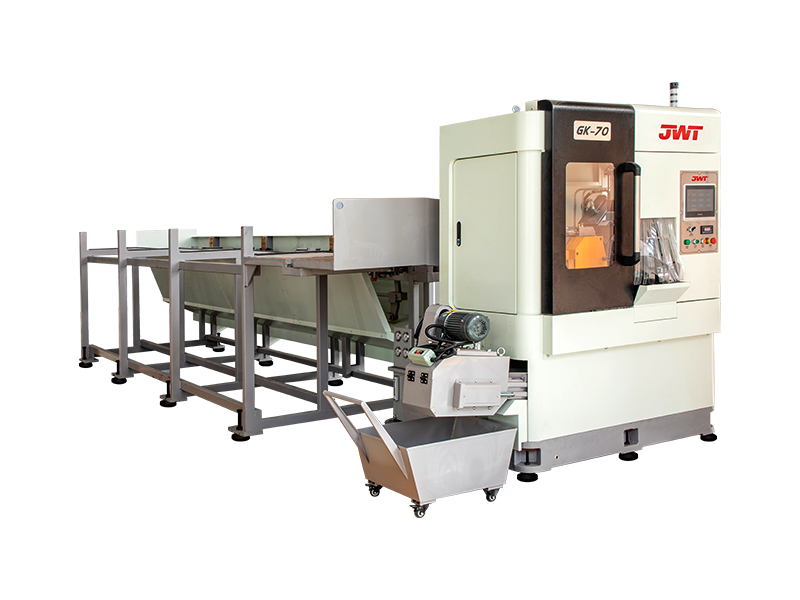What is an Automatic Saw Machine?
An automatic saw machine is a highly advanced cutting tool designed to automate the entire sawing process, from the initial loading of raw material to the final cut and often, even unloading of the finished pieces. Unlike manual or semi-automatic saws that require significant operator involvement, an automatic saw operates with minimal human intervention once programmed, making it ideal for high-volume, repetitive production tasks.
Key Features:
Full Automation: The hallmark of an automatic saw is its ability to perform all steps of the cutting process autonomously. This includes:
Material Feeding: Automatic systems precisely feed the material (e.g., bar stock, profiles, wood planks) into the cutting zone. This often involves conveyor belts, roller systems, or shuttle vices.
Positioning and Clamping: The material is accurately positioned according to programmed cut lengths and then securely clamped to prevent movement during cutting, ensuring precise dimensions.
Cutting: The saw blade (band saw, circular saw, etc.) performs the cut at optimal speeds and feeds.
Unloading/Sorting: Many advanced automatic saws can automatically unload cut pieces and even sort them based on length or other parameters.
Precision and Consistency: Automatic saws utilize sophisticated control systems, often Programmable Logic Controllers (PLCs) or Computer Numerical Control (CNC). These systems allow operators to program precise cutting parameters like:
Cut length (often to 0.1mm or 0.01 inch increments)
Number of pieces
Cutting speed and feed rate (optimized for different materials)
Cutting angle (for miter cuts or bevels) This level of control ensures exceptional accuracy and repeatability, virtually eliminating human error and material variations.
High Productivity & Efficiency: By automating repetitive tasks, automatic saws drastically increase throughput and reduce cycle times. They can operate continuously, often in "lights-out" scenarios (unattended operation), for extended periods, maximizing production capacity.
Reduced Labor Costs: The minimal need for operator intervention frees up skilled labor to focus on more complex tasks, leading to significant cost savings in the long run.
Versatility: Depending on the type of saw blade and machine design (e.g., automatic band saw, automatic circular saw), these machines can cut a wide range of materials, including:
Various metals (steel, aluminum, brass, stainless steel)
Wood
Plastics
Composites
Foam
Enhanced Safety: Automation reduces the direct interaction between operators and the cutting blade, significantly improving workplace safety. They typically include features like protective guards, emergency stop buttons, and automatic blade breakage detection.
How it Works (General Principle):
While specific mechanisms vary by machine type (e.g., band saw vs. circular saw), the general operational flow of an automatic saw machine is as follows:
Programming: The operator inputs the desired cutting parameters (cut length, quantity, material type, etc.) into the machine's control panel (HMI - Human Machine Interface), which is often a touchscreen.
Material Loading: Raw material (e.g., a long bar or bundle of material) is loaded onto the machine's infeed system. This can be done manually or via automated loading magazines/conveyors.
Material Feeding and Positioning: The machine's automated feeding mechanism (e.g., a shuttle vice, powered rollers, or a gripper system) pulls or pushes the material into the cutting zone. An encoder or limit switch precisely measures the length of material being fed to ensure accurate cut lengths.
Clamping: Once positioned, hydraulic or pneumatic clamps secure the material firmly in place.
Cutting Cycle: The saw blade engages the material at the pre-programmed speed and feed rate. For band saws, the continuous blade rotates around two wheels. For circular saws, a high-speed rotating disc cuts through the material.
Blade Retraction: After the cut is complete, the blade retracts.
Material Advancement: The clamping system releases, and the feeding mechanism advances the remaining material for the next cut.
Part Ejection/Collection: The cut piece is often automatically ejected onto an outfeed conveyor, into a collection bin, or onto a sorting unit.
Repeat: The cycle repeats until the programmed number of pieces is cut or the raw material runs out. The machine will typically stop and alert the operator if the material runs out or if there's a problem (e.g., blade breakage).
Primary Applications:
Automatic saw machines are indispensable in industries requiring high-volume, precise, and consistent cutting. Some common applications include:
Metal Fabrication: Cutting beams, pipes, tubes, and bar stock for structural components, machinery parts, and more.
Automotive Industry: Producing components like exhaust pipes, chassis parts, and engine components.
Construction: Cutting rebar, structural steel, and various profiles to length.
Manufacturing: General production of components for a wide array of products.
Steel Service Centers: Processing large quantities of steel for distribution.
Aerospace: Cutting specialized alloys and composite materials with high precision.
Furniture Manufacturing: Precision cutting of wood components for furniture assembly.
Plastics and Composites: Cutting sheets, rods, and profiles for various applications.
Die and Mold Industry: Precision cutting of material blanks for mold and die creation.
In summary, an automatic saw machine is a cornerstone of modern industrial production, offering unparalleled efficiency, accuracy, and labor savings for repetitive cutting tasks across numerous sectors.




 中文简体
中文简体 русский
русский







